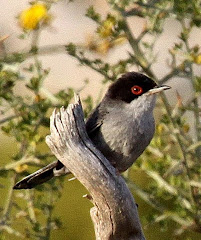For each of the past few years a Great Grey Shrike has been reported within this general area of Bowland (from Stocks Reservoir to Waddington Fell), often arriving here before Christmas.

Perhaps due to the mild weather in early winter, a first sighting was made only yesterday at Marl Hill where a bird was seen in an isolated private garden where feeders are put out for tits and finches. No doubt this was the attraction for the Shrike. After an hour’s unsuccessful watch here on what was a beautifully bright and calm sunny morning today, a move further east along the road was rewarded with a sighting, the bird perched high in typical shrike-fashion on the tip of a roadside tree. It was possible to view it and photograph it down to about 25 metres before it was disturbed by an oncoming vehicle and was lost from sight. It made a brief return later but a further 3 hours of watching proved blank. Here, there is a large area of suitable but rather inaccessible terrain into which the bird presumably vanishes for long periods of time. A small flock of ten Crossbills, a very distant view through the 'scope of a Ringtail Hen Harrier over the moors to the north, and a Stoat in ermine in a nearby field, greatly added to the interest.









.jpg)



